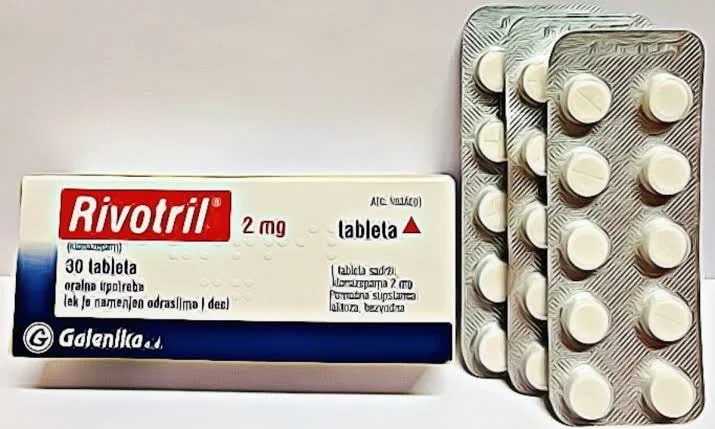Rivotril 2mg, also known by its generic name clonazepam, is a medication used to treat seizures, panic disorders, and anxiety. It belongs to the benzodiazepine class, which works by calming brain activity. One important factor in using Rivotril effectively is understanding its half-life and how it affects dosing.
What Is Half-Life?
The term "half-life" refers to the time it takes for half of a drug's active substance to leave the bloodstream. This concept helps doctors decide how often a medication should be taken. For Rivotril, the half-life is quite long compared to many other medicines in its class.
Half-Life of Rivotril 2mg
The average half-life of Rivotril 2mg is 30 to 40 hours. This means that after taking a dose, it takes more than a day for half of the medicine to leave the body. Full clearance may take up to a week depending on a person’s metabolism, age, and liver function.
Because of this long half-life, Rivotril tends to build up in the system if taken regularly. This helps keep a steady level of medication in the body, which is useful for long-term treatment.
How Half-Life Affects Dosing
The long half-life allows Rivotril to be taken once or twice a day, depending on the condition being treated. For panic disorders or anxiety, a single dose may be enough for 24 hours. In seizure control, doctors may split the total dose into two or three smaller doses per day.
This flexibility makes it easier for patients to stick to a treatment plan. It also reduces the risk of sudden withdrawal, since the medication stays in the body for a longer time.
Steady-State Concentration
With regular use, Rivotril reaches a steady-state level in the body after about 5 to 7 days. This is when the amount of drug taken equals the amount removed by the body. At this point, the therapeutic effect becomes more stable.
Doctors consider this when adjusting the dose. Changes to the dose should be gradual to prevent side effects or withdrawal symptoms.
Dosing Frequency for Different Conditions
1. For Seizure Disorders
Rivotril is often started at a low dose and increased slowly. The total dose may be divided throughout the day. This approach helps manage symptoms while reducing side effects like drowsiness.
2. For Panic Disorders
Many patients with panic attacks take a single daily dose, usually at night. The long half-life helps control anxiety without frequent dosing.
3. For Short-Term Anxiety Relief
In some cases, Rivotril is used as needed. However, due to its long half-life, repeated use without medical advice can lead to accumulation and side effects.
Why Timing Matters
Taking Rivotril at the same time daily helps maintain consistent blood levels. Skipping doses or taking extra doses can cause uneven drug levels. This might lead to side effects like dizziness, fatigue, or confusion.
People should follow their doctor’s instructions closely and avoid changing the timing or amount without approval.
Factors That Affect Half-Life
Several personal factors can influence how long Rivotril stays in your system:
- Age: Older adults may process the drug more slowly.
- Liver function: Since Rivotril is broken down by the liver, liver issues may increase the half-life.
- Other medications: Some drugs can speed up or slow down how Rivotril is processed.
- Dosage: Higher doses may stay longer in the system.
Safety and Monitoring
Because Rivotril has a long-lasting effect, it’s important to use it with care. Regular checkups help make sure the dose is working and not causing problems. Doctors may do liver tests or adjust the schedule if needed.
You can buy Rivotril 2mg online through verified pharmacies with a prescription. Make sure the source is legal and safe to avoid counterfeit products.
Conclusion
Understanding the half-life of Rivotril 2mg helps you use it more effectively. It allows for stable dosing, reduced side effects, and improved treatment outcomes. Always follow a doctor’s advice when starting or adjusting your dose. With careful use, Rivotril can offer strong support for those dealing with anxiety or seizures.





Comments